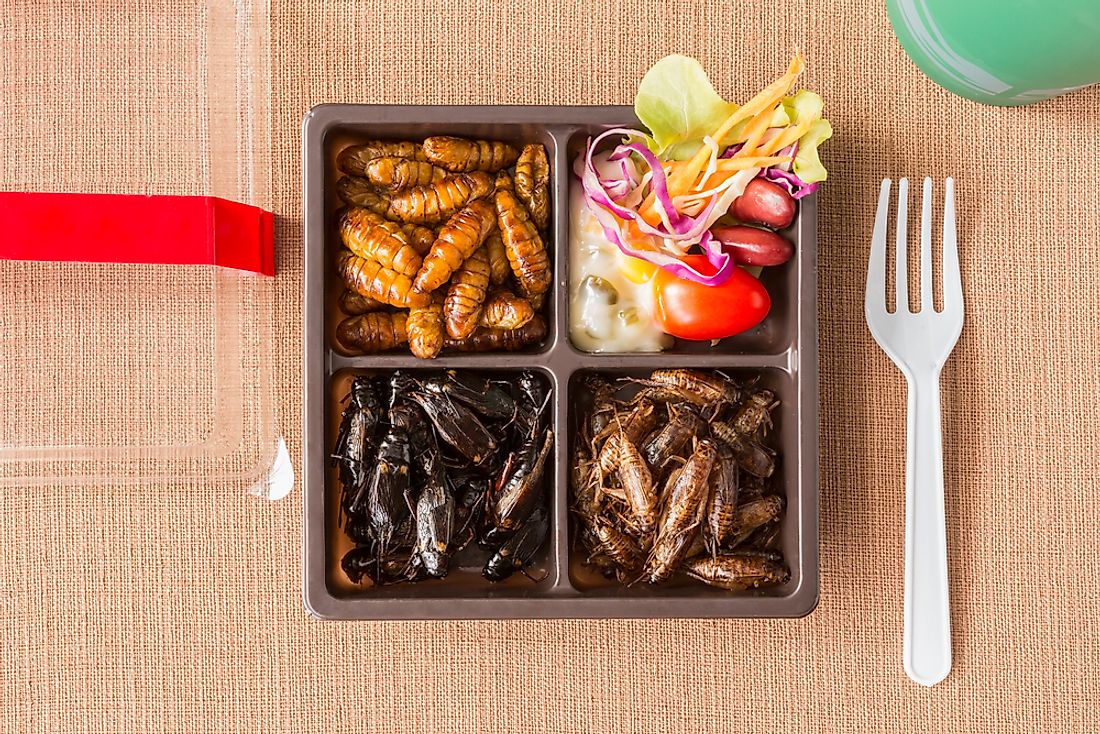Top Regions in the Global Edible Insect Market

The global demand for animal-based food is on the rise at a time when varying climatic conditions are threatening the production of crops across the globe. To counter the effect of crop reduction, people have resorted to consuming insects which have become part of the diet of about 2 billion people, a majority of whom are in Asia. Insects have been consumed for as long as man has existed, but it is not until now that the world has considered insects a source of food. The United Nations and researchers have even gone to the extent of claiming that insect consumption might be the solution to the global shortage of food. With over 2,000 edible species, the value of the insect market is set to triple to $1.2 billion by 2023. The most consumed insects in the world are crickets, grasshoppers, cicadas, ants, beetle grubs, and mealworms. The following regions lead in the global edible insect market.
Top Regions in the Global Edible Insect Market
The Asia-Pacific
The Asia-Pacific region led in insect consumption in 2017 with an insect market value estimated at $173.9 million. Thailand, China, and Vietnam are the largest consumers of insects. Several insect farms are replacing poultry and fish farms as farmers realize that insects are more profitable. In Thailand for example, the sight of deep fried insects being sold in the marketplace is common and in China, insects are part of the daily cuisine in households. By 2023, the insect market in the Asia-Pacific is estimated to rise to $477 million.
Latin America
Latin America is the second largest market for consumable insects with a market value of $92.2 million. Edible insects have always been a source of food for Latin America although the practice is not widespread in Central America, it has prevailed in Mexico, Ecuador, Colombia, Brazil, and Venezuela. Popular insects in Latin America are beetles, bees, ants, wasps, moths, termites, and butterflies. They are consumed as supplements or as substitutes during a shortage. By 2023, the insect market in the region is estimated to have risen to $250 million.
Europe and North America
Europe and North America have a joint market value of $126 million, but Europe has twice the insect market value as North America. The Netherlands, France, Belgium, the UK, and Denmark are the leaders in insect consumption in Europe. By 2023, Europe is estimated to have surpassed Latin America as the second largest insect market with a market value of $261.5 million while the North American market is estimated to rise to $154 million.
The Middle East and Africa
The Middle East and Africa have the lowest market for edible insects. Apart from Israel that has embraced insect farming, the rest of the middle east has shunned the idea of including insects in the diets. The situation is totally different in Africa where insects have been parts of the diets for thousands if not millions of years. The rural communities of DRC, Congo, CAR, Cameroon, Zambia, Zimbabwe, South Africa, and Nigeria consume insects as part of daily diets.
Benefits of Entomophagy
Insects are a rich source of protein and calcium. The cost of farming insects is significantly lower than producing poultry, beef, and pork. According to the Food & Agriculture Organization, the cost of producing a pound of crickets is less than a fifth of the feed required to produce an equal amount from a cow. Insects also reduce the need for growth hormones, antibiotics, and require far much less water than livestock.
Top Regions in the Global Edible Insect Market
| Rank | Region | Edible Insect Market (in millions $USD) |
|---|---|---|
| 1 | Asia-Pacific | 173.9 |
| 2 | Latin America | 92.2 |
| 3 | Europe | 82.1 |
| 4 | North America | 44.1 |
| 5 | Middle East and Africa | 14.2 |











